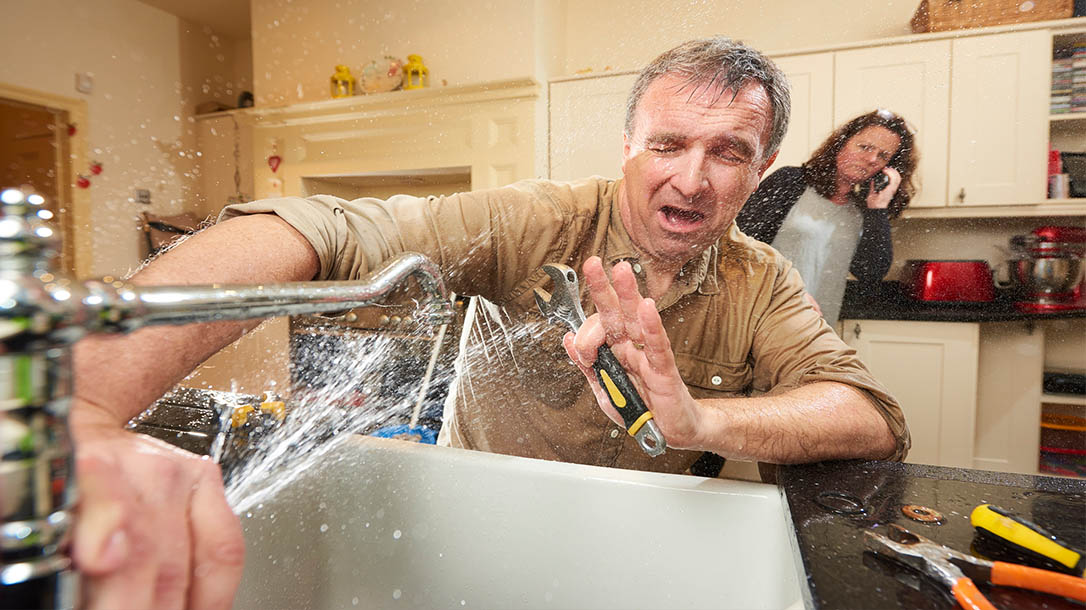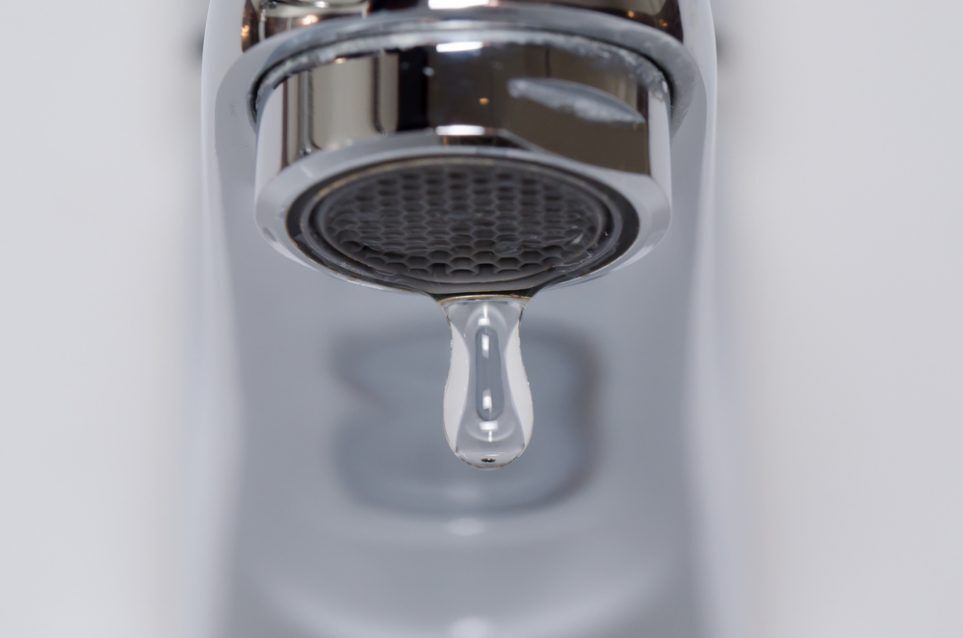Why It's Needed to Correct a Malfunctioning Faucet
Why It's Needed to Correct a Malfunctioning Faucet
Blog Article
We've encountered this great article relating to How to Fix a Dripping or Leaky Faucet directly below on the net and think it made good sense to discuss it with you here.

Trickling taps could feel like a small aggravation, yet their effect exceeds just the inconvenience of the sound. From drainage to sustaining unnecessary financial prices and wellness dangers, disregarding a dripping tap can cause various effects. In this post, we'll delve into why it's critical to resolve this usual home issue without delay and successfully.
Wastage of Water
Ecological Impact
Trickling faucets add substantially to water waste. According to the Environmental Protection Agency (EPA), a solitary faucet dripping at one drip per secondly can throw away greater than 3,000 gallons of water per year. This not just pressures water resources but additionally impacts ecosystems and wild animals dependent on them.
Financial Prices
Enhanced Water Expenses
Beyond the ecological effect, dripping taps can blow up water costs substantially. The collected wastefulness with time converts right into greater energy expenditures, which can have been stayed clear of with prompt repair services.
Prospective Property Damages
Moreover, long term trickling can cause damage to components and surfaces surrounding the tap. Water accumulation can create staining, deterioration, and even architectural issues if left neglected, leading to added repair work prices.
Health and wellness Problems
Mold and Mold Development
The constant visibility of moisture from a trickling faucet produces an excellent environment for mold and mold development. These fungis not only compromise indoor air high quality yet additionally present wellness threats, specifically for people with respiratory conditions or allergies.
Waterborne Diseases
Stagnant water in trickling faucets can end up being a breeding place for germs and various other virus, raising the risk of waterborne diseases. Pollutants such as Legionella germs flourish in stagnant water, potentially resulting in severe illnesses when consumed or inhaled.
Do it yourself vs. Professional Repair service
Pros and Cons of Do It Yourself Fixing
While some may attempt to deal with a leaking faucet themselves, do it yourself repair work come with their own set of challenges. Without proper expertise and tools, do it yourself efforts can aggravate the issue or bring about insufficient repair work, prolonging the issue.
Advantages of Employing a Specialist Plumber
Hiring an expert plumber makes certain that the underlying cause of the dripping faucet is attended to successfully. Plumbings possess the know-how and tools to detect and fix tap problems efficiently, saving time and reducing the risk of further damages.
Step-by-Step Overview to Taking Care Of a Dripping Faucet
Tools Required
Prior to attempting to deal with a leaking faucet, collect the needed tools, consisting of a flexible wrench, screwdrivers, replacement components (such as washers or cartridges), and plumber's tape.
Usual Faucet Issues and Their Solutions
Recognize the kind of tap and the particular concern causing the drip. Usual problems consist of damaged washers, rusty valve seats, or malfunctioning O-rings. Describe producer directions or on the internet tutorials for step-by-step advice on repair services.
Preventive Measures
Normal Maintenance Tips
To stop leaking taps, carry out regular upkeep such as cleansing aerators, evaluating for leaks, and replacing damaged components promptly. Additionally, consider installing water-saving devices or updating to extra reliable components.
Value of Prompt Fixes
Attending to leaking faucets as soon as they're seen prevents further water wastefulness and prospective damage, eventually saving both water and money in the future.
Influence On Property Value
Perception of Well-Maintained Property
Maintaining a residential or commercial property in good condition, consisting of dealing with maintenance problems like leaking faucets, enhances its perceived worth and charm among potential customers or renters.
Influence on Resale Worth
Features with well-kept plumbing fixtures, consisting of faucets, command greater resale values in the property market. Attending to dripping faucets can add to a favorable impact throughout home assessments and arrangements.
Ecological Duty
Individual Payment to Conservation
Taking responsibility for fixing dripping faucets straightens with more comprehensive initiatives towards water preservation and ecological sustainability. Every person's activities jointly make a considerable effect on maintaining precious resources.
Lasting Living Practices
By focusing on prompt repairs and taking on water-saving routines, individuals add to sustainable living methods that benefit both present and future generations.
Final thought
Attending to a dripping faucet goes beyond simple benefit; it's an important action toward preserving water, decreasing economic expenses, and safeguarding health and wellness and home. Whether via do it yourself repair services or specialist support, doing something about it to fix leaking taps is a small yet impactful method to advertise liable stewardship of resources and contribute to a much healthier, extra sustainable future.
How to Fix a Leaky Faucet: Step-by-Step Repair Guide
A leaky faucet may seem like a simple annoyance, but if it's not fixed promptly, that leak could cost hundreds to potentially thousands. From water damage to mold, mildew, and high water bills, even a tiny leak can be catastrophic if left unattended. Damage like this can even affect the overall value of your home, so it's important to take the right approach for leaky faucet repair. You may need the help of a plumber in some cases, but we've got a few tips you can try on how to fix a leaky faucet before calling the pros.
Four Faucet Types
When you're learning how to fix a leaky faucet, the first step is knowing what kind of faucet you're working with! There are four common types.
Cartridge Faucets
Cartridge faucets come in one- or two-handled varieties. In one-handled cartridge faucets, hot and cold water combines in a single cartridge. In the two-handled versions, hot and cold water are controlled separately and mixed in the faucet.
Ball Faucets
Ball faucets have a single lever you push up and down to adjust the pressure and rotate to change the temperature. A slotted metal ball controls the amount of water allowed into the spout.
Compression Washer Faucets
They're the oldest type of faucet, but they're still used in many homes — especially older ones. Compression faucets have two separate handles that, when turned, raise or lower the washer that seals a water valve. This valve stops water from flowing through the faucet when it is turned off.
Disc Faucets
Disc faucets rarely need to be repaired due to their maintenance-free design. The water flow is controlled by two discs — the upper one raises and lowers against a fixed lower disc, creating a watertight seal. If your disc faucet starts leaking, you may need to replace the seals or clean residue buildup from the inlets.
Fixing a Leaky Faucet
Step 1: Turn Off the Water
Whether you're learning how to fix a leaky bathtub faucet or how to fix a leaky kitchen faucet, always turn off the water supply to your working area when you're fixing a leak. The last thing you want is a flood added to your list of things to fix.
Look for the shutoff valves below your sink or around the tub and turn them clockwise to stop the water flow. If your faucet doesn't have shutoff valves, you may need to turn off the water for the whole house. Check to make sure it's off by turning the faucet on. If nothing comes out, you're ready to start the repair.
Step 2: Take Apart the Faucet
How you disassemble your faucet depends on the type of fixture you have. You can use a flathead screwdriver to remove the caps on top of the handle or handles for cartridge and compression faucets. Inside, you should see handle screws. Unscrew these with a screwdriver to remove the handle.
Disc- and ball-style faucets will typically have an inlet screw near the handle, and removing that will reveal the interior of the faucet.
Detach the Valve Stem
For cartridge- and compression-style faucets, you'll see the inner valve stem or cartridge once you remove the faucet handles. If you have a compression faucet, unscrew the brass valve stem. If you have a cartridge faucet, pull out the cartridge. If your cartridge has been in place for a while, it may require some tools or extra force to remove it due to mineral deposits.
Examine and Replace Parts
Once you've removed the parts, check them out to confirm what needs to be replaced. You may see corroded rubber washers, O-rings, stems, or cartridges. On a ball-style faucet, check the seats and springs for damage.
If you need to repair a leaky disc faucet, check the inlet and seals on the lower disc.
Once you determine what parts must be replaced, visit your local hardware store. Bring the damaged parts with you to ensure you can purchase the correct components to replace them.
Clean Valves and Faucet Cavity
If you've removed a stem or cartridge, you may notice mineral buildup in the faucet's threads. Use white vinegar to clean the valve seat by soaking it for a few minutes, then scrub it away with a soft toothbrush and rinse with warm water. You can also clean the interior of the faucet in the same way.
Reassemble the Faucet
Once your faucet is cleaned and the required parts have been replaced, it's time to reassemble it. Put the pieces back together and slowly turn the water supply back on. Doing this slowly is crucial because too much initial water pressure can damage the new hardware you've just installed.
https://homewarranty.firstam.com/blog/how-to-fix-leaky-faucet

As an avid reader on Why Are My Faucets Dripping (And Can I Fix It Myself)?, I thought sharing that excerpt was a great idea. Kindly pause to distribute this blog if you enjoyed it. Thanks for taking the time to read it.
Report this page